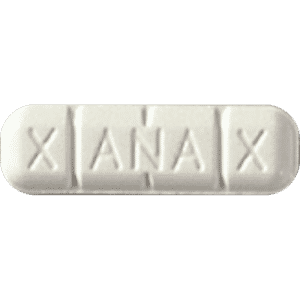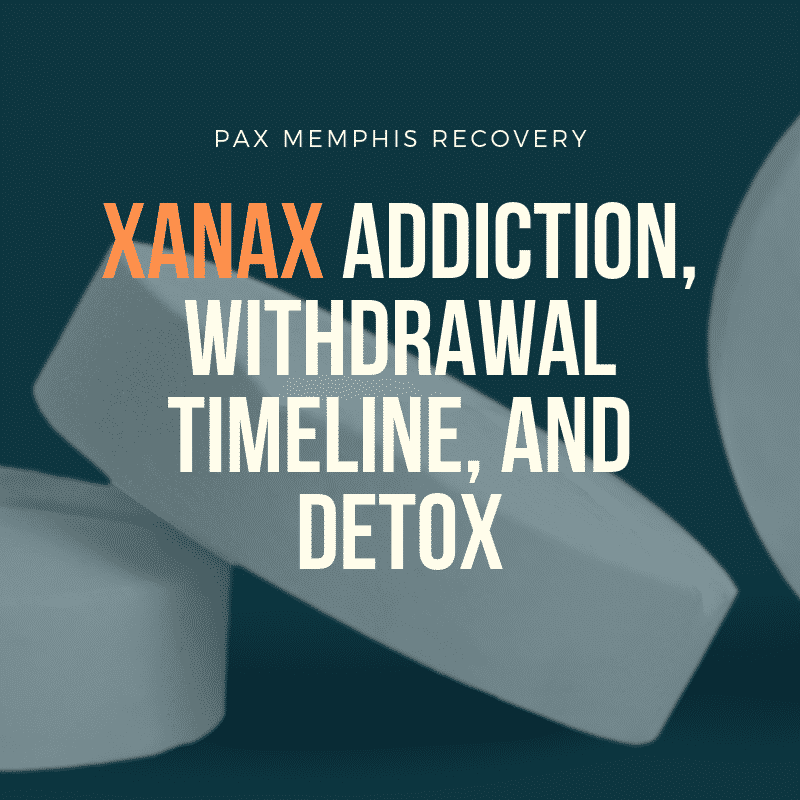Xanax Addiction, Withdrawal Timeline, and Detox
Xanax is a pharmaceutical medication prescribed to treat anxiety disorders, panic attacks, insomnia, and some symptoms of depression. Xanax, and it’s generic form, alprazolam, is the most frequently prescribed benzodiazepine in the United States. Benzodiazepines are a class of drugs that work by slowing down the central nervous system to promote feelings of relaxation and sedation.
Although Xanax can be safe and effective when taken as prescribed, they have a high potential for abuse due to the euphoric effects they produce. When Xanax is abused, it can easily turn in to an addiction that is difficult to overcome. If a person who is dependent on Xanax stops taking it suddenly, they will experience unpleasant withdrawal symptoms that can cause a decline in the individual’s mental and physical health.

Signs of Xanax Addiction
Despite the effectiveness of Xanax when used as prescribed by a physician, an addiction can ensue when it is abused. When misusing Xanax, an individual may continue to indulge in more and more of the drug because tolerance can develop rapidly. In extreme cases, a person who is addicted to Xanax may consume more than 20 pills a day. Once a person has developed a tolerance to the drug, it is likely that they will become dependent on it and experience withdrawal symptoms when Xanax isn’t taken.
Signs that indicate that someone is addicted to or abusing Xanax include:
- Doctor shopping to obtain multiple prescriptions from several different doctors
- Euphoria, pleasure, and relaxation
- Mood swings
- Depression
- Slurred speech
- Lack of coordination
- Memory problems
- Inappropriate or irrational behavior
- Inability to stop taking Xanax despite consequences
- Delayed movements and response times
- Attention problems
- Antisocial behavior
- Loss of interest in activities and obligations
- Confusion
- Fatigue, sedation, and dizziness
- Coma
- Experiencing withdrawal symptoms when the drug is not taken
Long term effects of Xanax abuse can lead to an increased risk of overdose, especially if Xanax is being taken in combination with other drugs like alcohol or opioids. When taken in high amounts or in combination with alcohol, a Xanax overdose can occur. Those who are addicted to Xanax, take Xanax intravenously or nasally, or mix Xanax with other drugs are more likely to experience a fatal overdose.
Symptoms of Xanax Withdrawal
Xanax withdrawal symptoms can vary from person to person depending on a variety of factors such as how long they have been addicted, the amount they take, age, weight, mental health, and state of physical health. Symptoms can be slightly uncomfortable for some, while others may find themselves in life-threatening situations.
Symptoms of Xanax withdrawal closely mimic alcohol and barbiturate withdrawal. Common symptoms of Xanax withdrawal include:
- Increased pulse and heart rate
- Raised blood pressure
- Anxiety, panic, and irritability
- Insomnia
- Restlessness
- Memory problems
- Muscle aches
- Profuse sweating
- Tremors
- Hallucinations
- Convulsions
- Seizures
Convulsions and seizures are the most dangerous symptoms of Xanax withdrawal. The risk of having a seizure is highest during the first 24-72 hours after the withdrawal process of beings. To ensure an individual’s safety during Xanax detox, it should never be attempted at home or alone. In order to make the detox process as safe and comfortable as possible, individuals who are experiencing Xanax withdrawals should seek out help from a medical detox.
Xanax Withdrawal Timeline and Complications
Like the symptoms of Xanax withdrawal, the detox timeline will also vary from person to person. Some factors that can affect the withdrawal timeline include frequency of use, dosage taken, length of time abuse has occurred, mental health, physical health, and other substance abuse problems. Xanax has a short half-life, so withdrawal symptoms can begin as soon as 6-8 hours after the last dose wears off. Withdrawals are typically at the worst during the second day and will slowly begin to subside by day 4 or 5.
Since Xanax withdrawal symptoms can be uncomfortable and agitating, there are many risks associated with Xanax detox that can be harmful or life-threatening to the individual.
Some complications that may occur during Xanax withdrawal are
- Abusing other drugs to help cope with withdrawal symptoms
- Risk of relapse due to the mental obsession and compulsion to use
- Excessive vomiting that can lead to dehydration
- Increased chance of suicide due to psychosis or depression
- Seizures that can be life-threatening
- Confusion and disorientation can cause delirium leading to poor decisions and impulsive behaviors
Although the most serious and uncomfortable withdrawal symptoms usually subside in less than a week, some individuals may experience post-acute withdrawal syndrome (PAWS). Symptoms of PAWS can include irritability, anxiety, panic attacks, racing thoughts, an obsession to use, erratic behaviors, and, in severe cases, psychotic behaviors. PAWS can occur sporadically during the first few months of sobriety.
Xanax Detox
Someone who is addicted to Xanax and experiencing withdrawal symptoms should never attempt to detox on their own. This can be extremely difficult, unpleasant, and sometimes life-threatening. Instead, seeking help from a medical detox can benefit these individuals. A professional medical detox can help alleviate the symptoms of Xanax withdrawal and protect against withdrawal complications. Detox will help aid in slowly removing the drug from the body and is an essential first step in attaining sobriety.
Detox can help individuals who are suffering from Xanax addiction by slowly tapering them off of Xanax in a controlled and supervised medical setting. Seeking help from a medical detox can help relieve withdrawal symptoms, reduce cravings, provide peer support, lower the risk of relapse, and create a drug rehab treatment plan specialized to meet each individual’s needs.
If you or a loved one is suffering from Xanax addiction, our addiction specialists at PAX Memphis will help make the detox process as safe and comfortable as possible. We aim to provide around the clock care and monitoring through our partial hospitalization drug rehabilitation program in Memphis in order to protect our clients from experiencing life-threatening withdrawal symptoms.
Navigating through Xanax withdrawal can be a scary and difficult process, but detox is undoubtedly the first step on the road to recovery. However, detoxing from Xanax is only the beginning, as people who have completed detox are advised to participate and complete a Xanax drug treatment program. Chronic Xanax abuse can increase the likelihood of developing a mental illness such as depression and bipolar disorder, making treatment even more important to the recovery process. Completing treatment can provide individuals with tools to prevent relapse and increase the chances of maintaining long-term sobriety.
